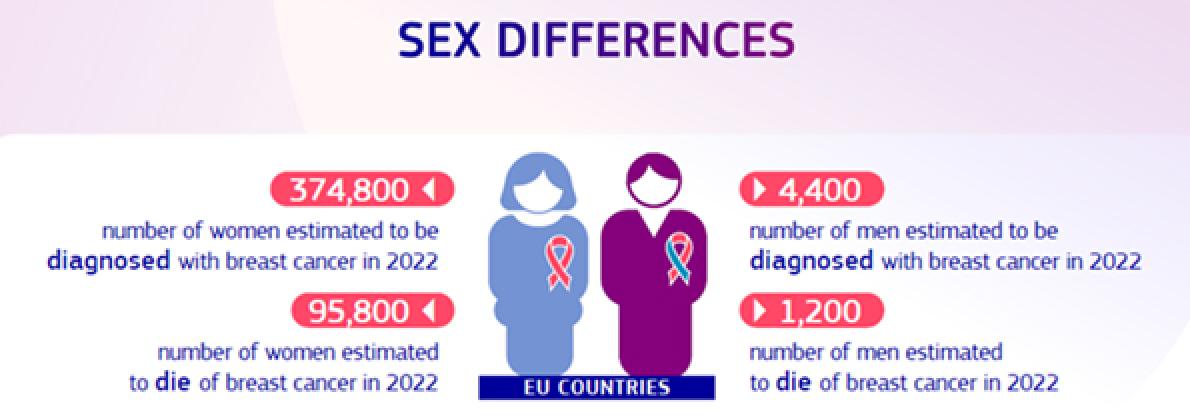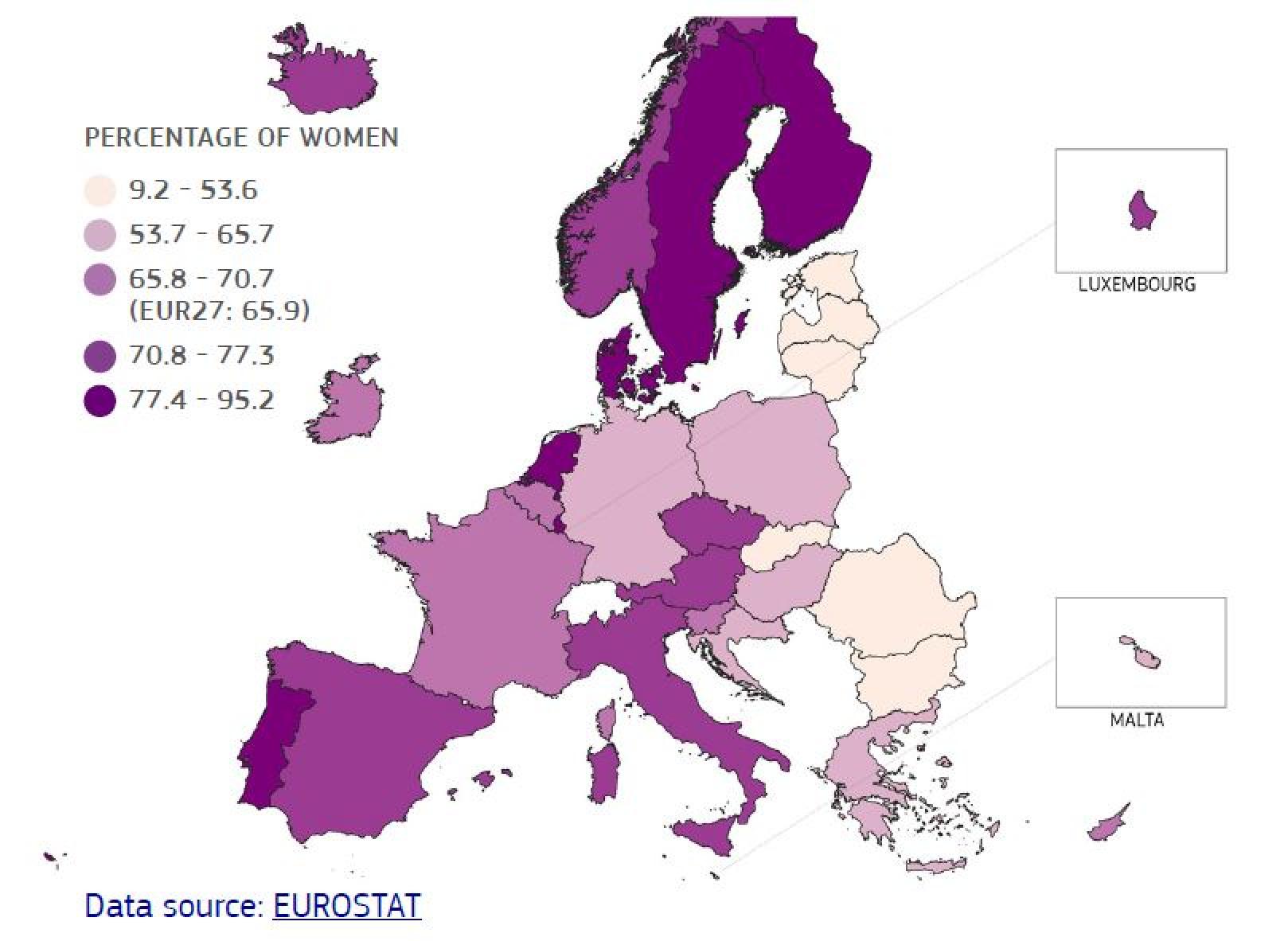October is Breast Cancer Awareness month
Check out our factsheets:
- Breast cancer in the EU
- Link to factsheet - Uncovering inequalities: Breast cancer screening in Europe
Breast cancer is by far the most frequently diagnosed cancer in women in the EU,
with 374 800 estimated new cases for 2022, corresponding to almost 30% of all diagnosed cancers (excluding non-melanoma skin cancers) in women. It is followed by colorectal, lung, corpus uteri and pancreatic cancers.
For women, breast cancer is also the leading cause of cancer mortality with 95,800 estimated deaths that account for 16.7% of all cancer deaths (excluding non-melanoma skin cancers) in EU women. It is followed by lung, colorectal, pancreatic and ovarian cancer deaths.
Differently from women, breast is a rare cancer in men with 4 400 estimated new cases accounting for 0.3% of all newly diagnosed cancers (excluding non-melanoma skin cancers) and 1 200 deaths accounting for 0.4% of all cancer deaths in men.
The risk of developing breast cancer in the ages 0-74 is 1 in 11 women and 1 in 909 men.

Age differences
Half of all estimated breast cancer cases in women occurred in the age group 45-69. For men, half of all estimated new cases occurred over 70 years. Both in women and men, about two thirds of all breast cancer deaths occurred in the age group 70+.
Geographical differences
The estimated incidence and mortality rates of breast cancer in women varied around two-fold across EU27 countries.
Screening for breast cancer
Factors contributing to the observed geographical variations of breast cancer incidence and mortality in women include implementation of organised breast cancer screening activities and the different prevalence and distribution of the major risk factors.
Despite the implementation of organised population-based screening programmes by most EU countries, differences in screening participation persist among countries and population groups.
In 2019, the self-reported participation in breast cancer screening of eligible women (50-69 years old) was approximately 66% in Europe, ranging from over 80% in some countries, to less than 10% in others, especially for countries in the Eastern European region.

Figure above: Percentage (%) of women aged 50-69 that reported to have had a mammography within the last 2 years in 2019.
In most EU countries women with the lowest education and income level, living in rural areas and women with severe disabilities and functional limitations participated less in breast cancer screening.
Breast cancer screening guidelines
TheLink to the European Commission Initiative on Breast Cancer (ECIBC) has has developed person-centred evidence-based guidelines and a quality assurance scheme for breast cancer care services. Its uptake across Europe, ensures that all women have equal access to breast cancer services with an essential level of quality and patient safety.
ECIBC recommends mammography screening every two years for women between the ages of 50-69, and suggests mammography screening starting at age 45 and continuing to age 74.
Addressing the inequalities in breast cancer screening in Europe is essential to improve early cancer detection and treatment outcomes, reducing the burden of the disease, and ensuring that all individuals have access to high-quality, evidence-based screening programs.
| Originally Published | Last Updated | 30 Oct 2023 | 01 Apr 2025 |
| Knowledge service | Metadata | Cancer | cancer burdencancer carecancer diagnosiscancer screening |
| Digital Europa Thesaurus (DET) | cancer |
Share this page

